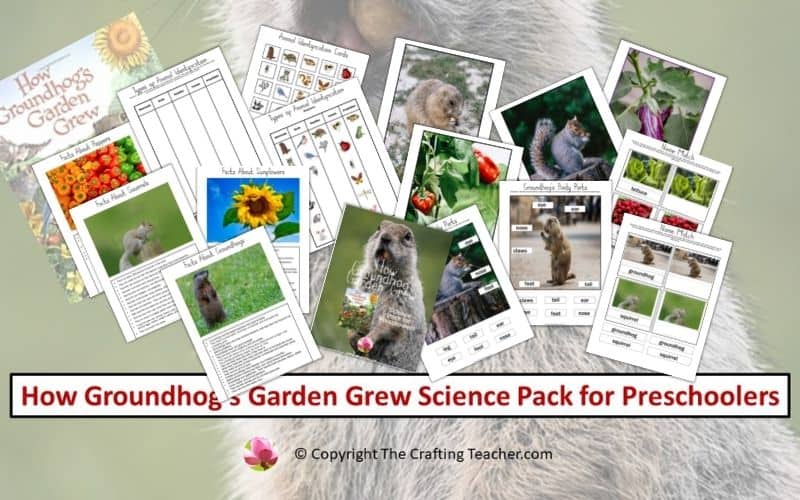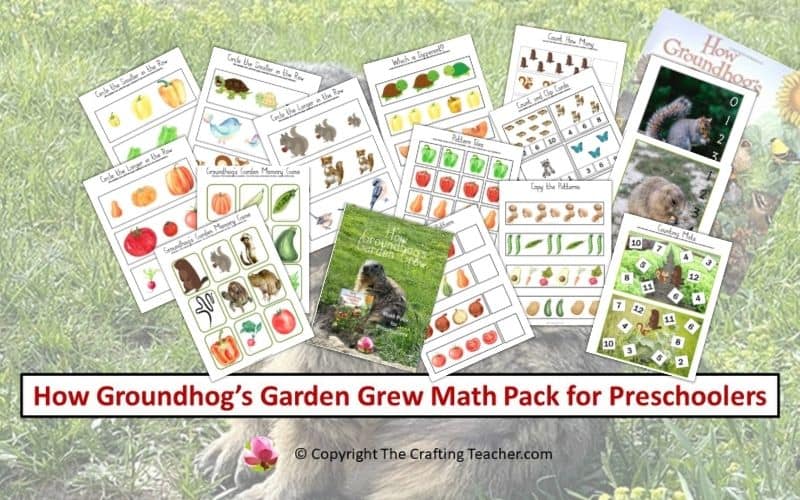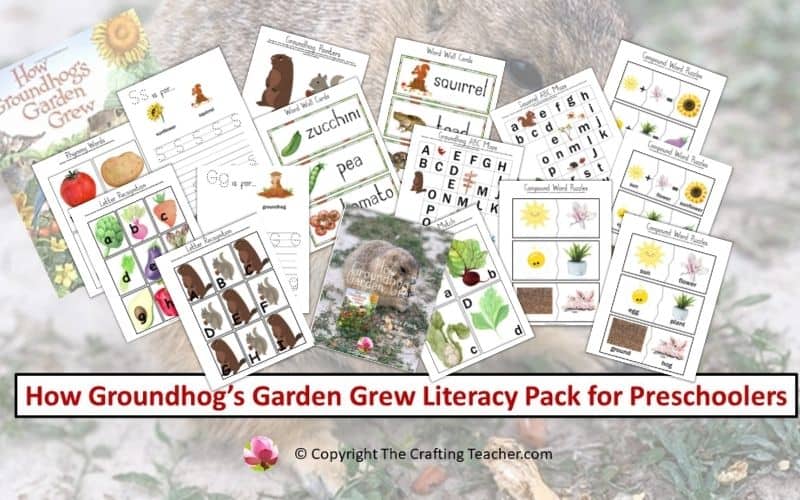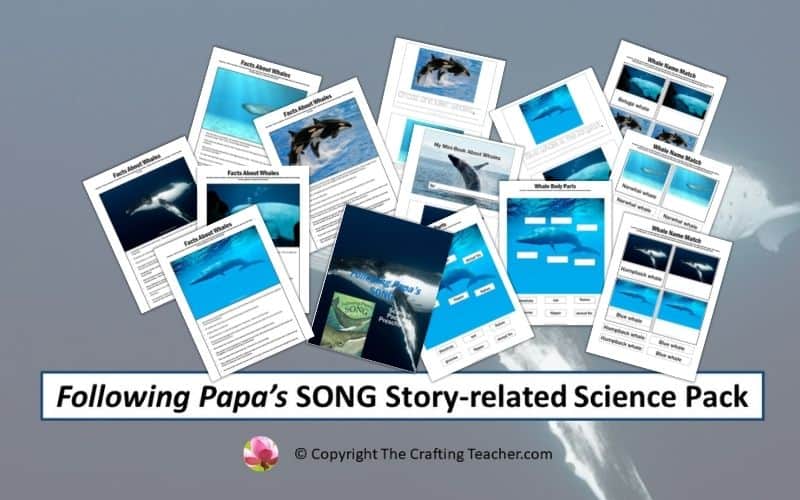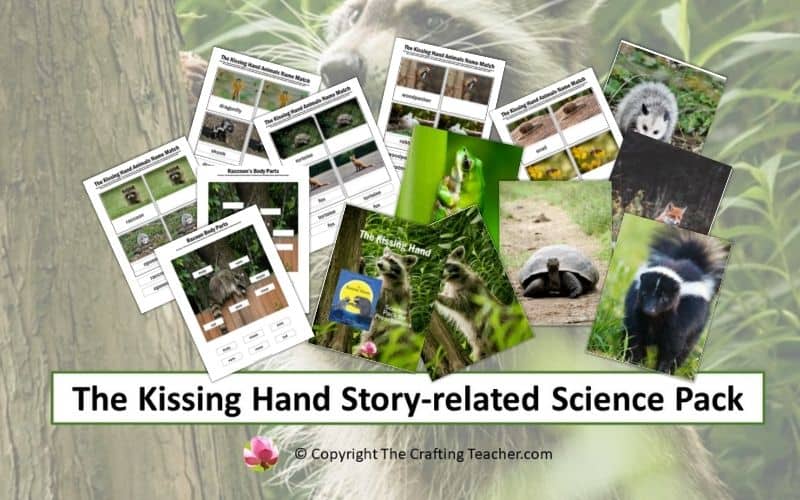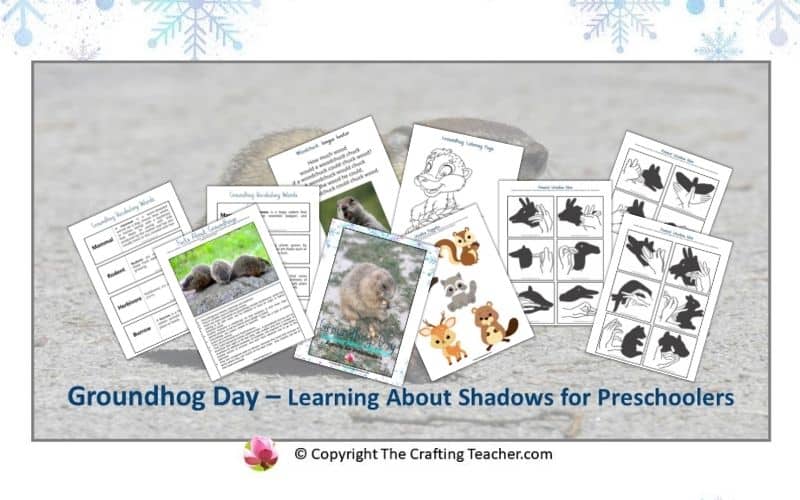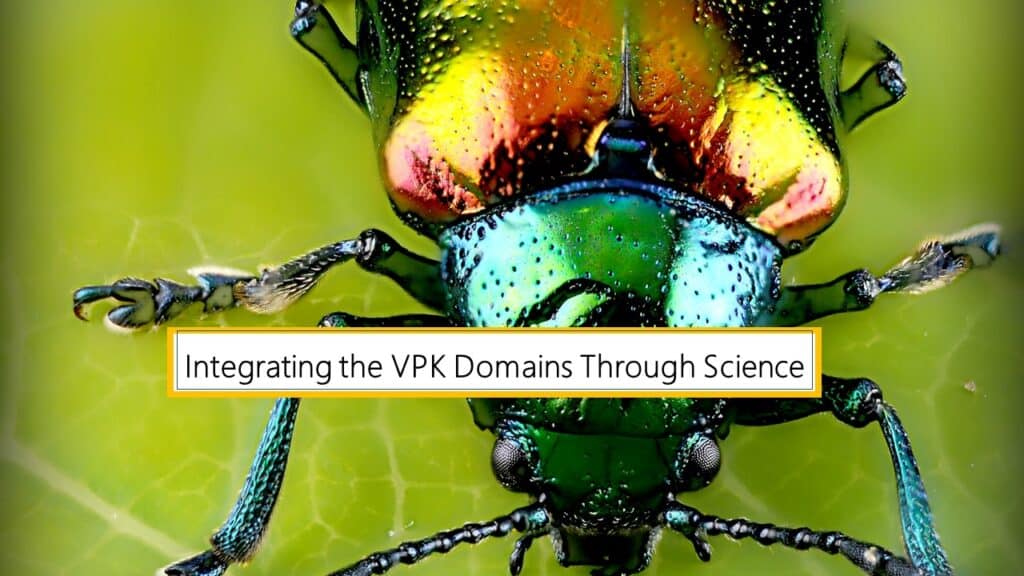How Groundhog’s Garden Grew Story-related Science Pack For Preschoolers
Affiliate Disclosure: “This post contains affiliate links, which means I receive a small commission, at no extra cost to you, if you make a purchase using those links.”
How the Groundhog’s Garden Grew by Lynne Cherri takes children on a journey from seed-gathering to planting, harvesting, and eating home-grown fruits and vegetables, teaching them about the gardening process, using beautiful illustrations, and to support this learning process I created a FREE 45 pages long story-related science pack, with multiple activities.
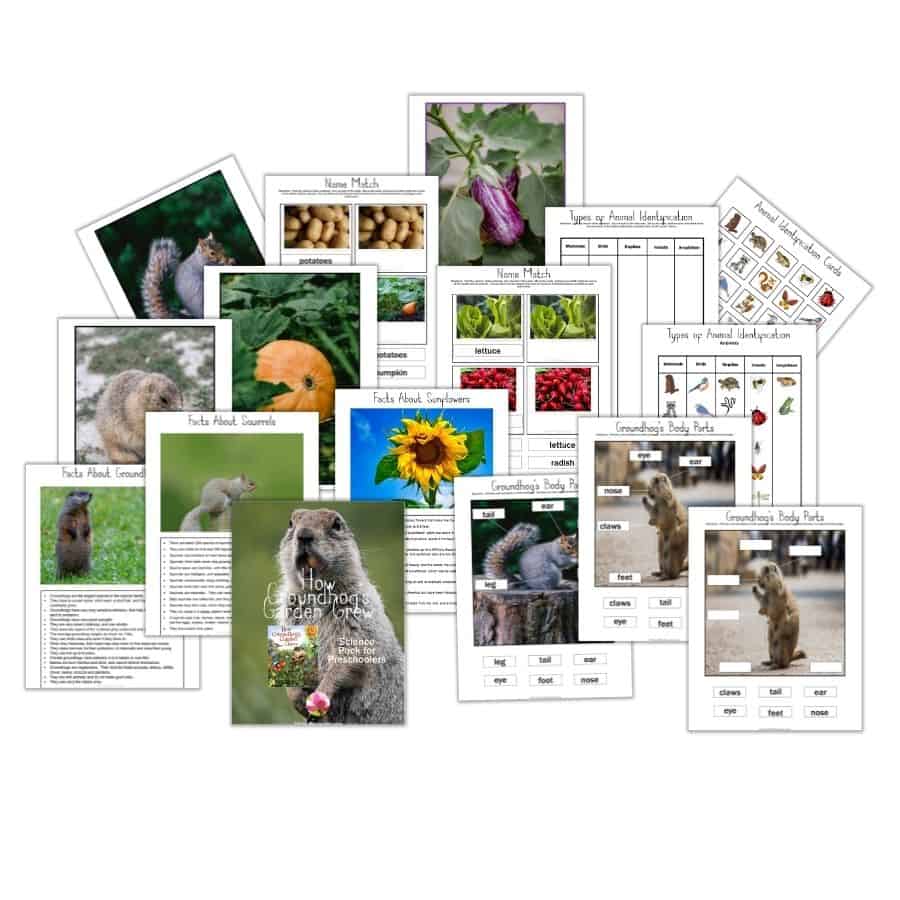
Children find the world around them fascinating, and they are constantly trying to find out why and how things happen, especially things from nature. This FREE pack of How Groundhog’s Garden Grew Story-related Science Pack will take your children to the groundhog’s garden, where they will learn about animals, fruits, and vegetable facts, and how to plant them,
Introducing Science to Preschoolers
Many teachers feel intimidated when they have to teach Science to their preschoolers, but they shouldn’t be. Preschoolers are naturally curious about their world, so it’s very easy and a great idea to get them to engage in science activities at an early age. The secret is to do hands-on experiments with them, answer their questions, and let them explore and experiment.
Benefits of Teaching Science to Preschoolers
Curiosity is as natural in young children as breathing. They are always trying to make sense of what they perceive with their senses, ask tons of questions to find the “why” about things, and are always investigating to find out how things work. We must take advantage of their natural curiosity and help them develop their scientific thinking.
Taking your time to introduce science to young children in a fun and interactive way, gives them many benefits. Some of them are:
- Use their interest in exploring and experimenting to establish a positive connection to science and encourage them to love it and stay interested for many years, if not thorough their entire life.
- Stimulate their scientific thinking and help them make sense of the world around them, and understand why things happened and how they work.
- Extend their vocabulary by promoting the development of language using scientific words, their communication, teamwork and cooperation, reasoning, and problem-solving skills. You can use science to teach every domain because it can easily tie up to literacy, math, and art. Therefore, always encourage your children to ask questions, observe different types of natural phenomena, experiment, and explore, but, most importantly, give them plenty of opportunities to do just that by offering fun, interactive, and hands-on experiences.
How Groundhog’s Garden Grew Science Activities
There are many science activities you can do using this storybook as a base. I’m sure you can come up with many, but I wanted to give you some of the activities I like to use.
Explain Facts About the Two Main Characters, a Groundhog and a Squirrel
Show them toy animals and/or real pictures. Ask them what they see and create a KWL chart (K = what they know; W = what they want to know and L = what they learn).
Write down everything they know about the groundhogs and squirrels in the K column and everything they want to know under the W column. At the end of the theme, when you review what they learned about these animals, write down the information in the L column). Keep it up to allow them to come back to it, discuss the information, and ask questions about it.
Discuss other animals in the story. Talk about which animals are mammals, reptiles, birds, and insects. Discuss some of the characteristics of each category. Help them understand the different ones and distinguish between them.
The How Groundhog’s Garden Grew Science Pack includes an activity to identify the types of animals that appear in the story.
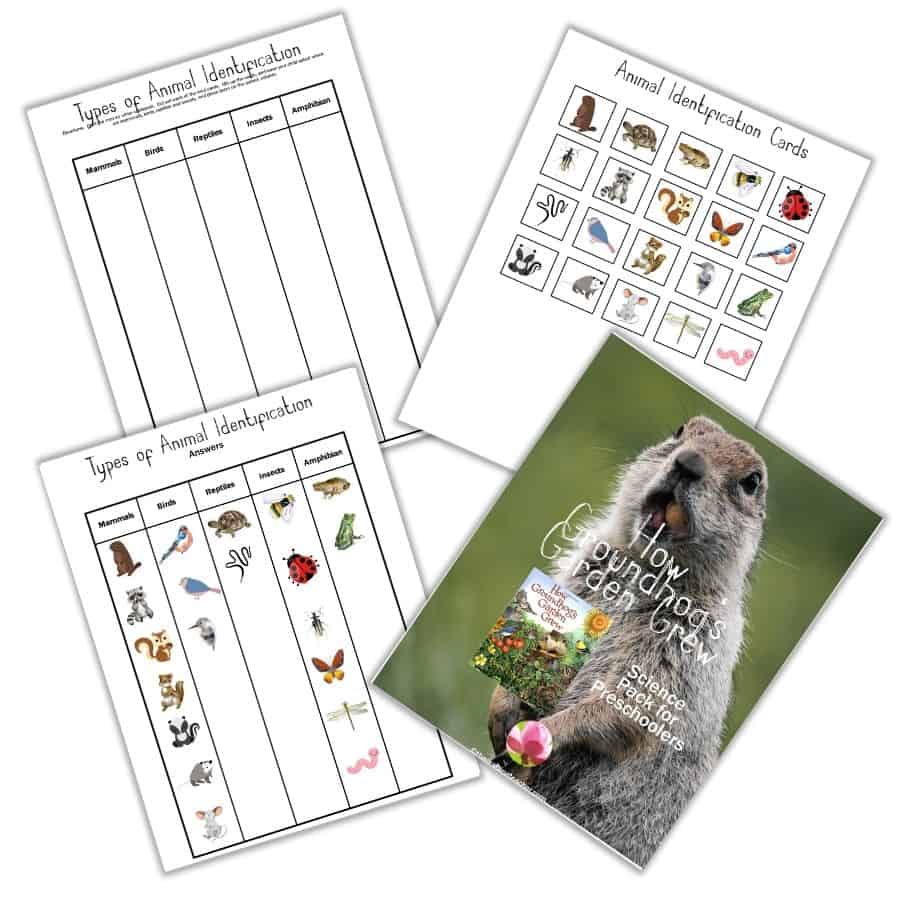
Introduce Some of The Vegetables and Fruits from The Story
Present pictures of different types of vegetables and fruits, and invite your students to talk about the differences they see in the pictures. After that, help them learn some facts about each of them, and distinguish which are vegetables and which are fruits.
This is also a good opportunity to talk about pollination, the importance of bees and other pollinators, and how to plant, grow, and take care of these products.
I included posters and cards with their pictures and the most relevant information, as part of the How Groundhog’s Garden Grew Science Pack. You can print them out on white cardstock, place the information part behind the picture, and laminate them. Then you can put them all together in a ring, to have them handy.
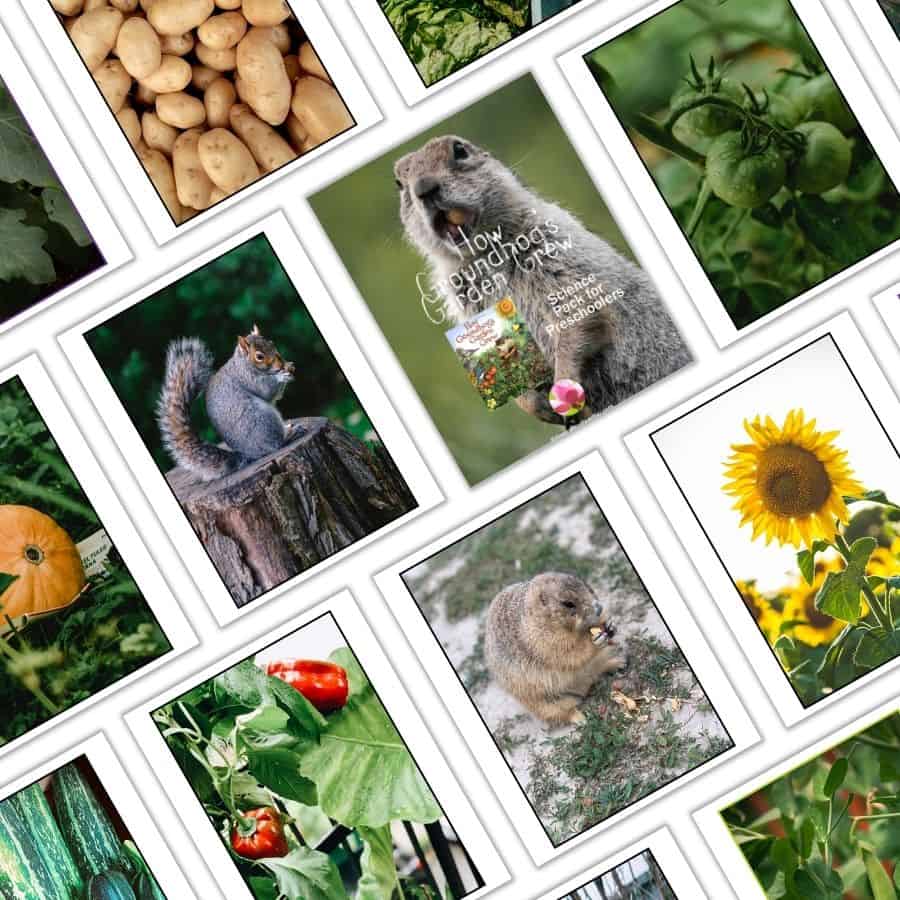
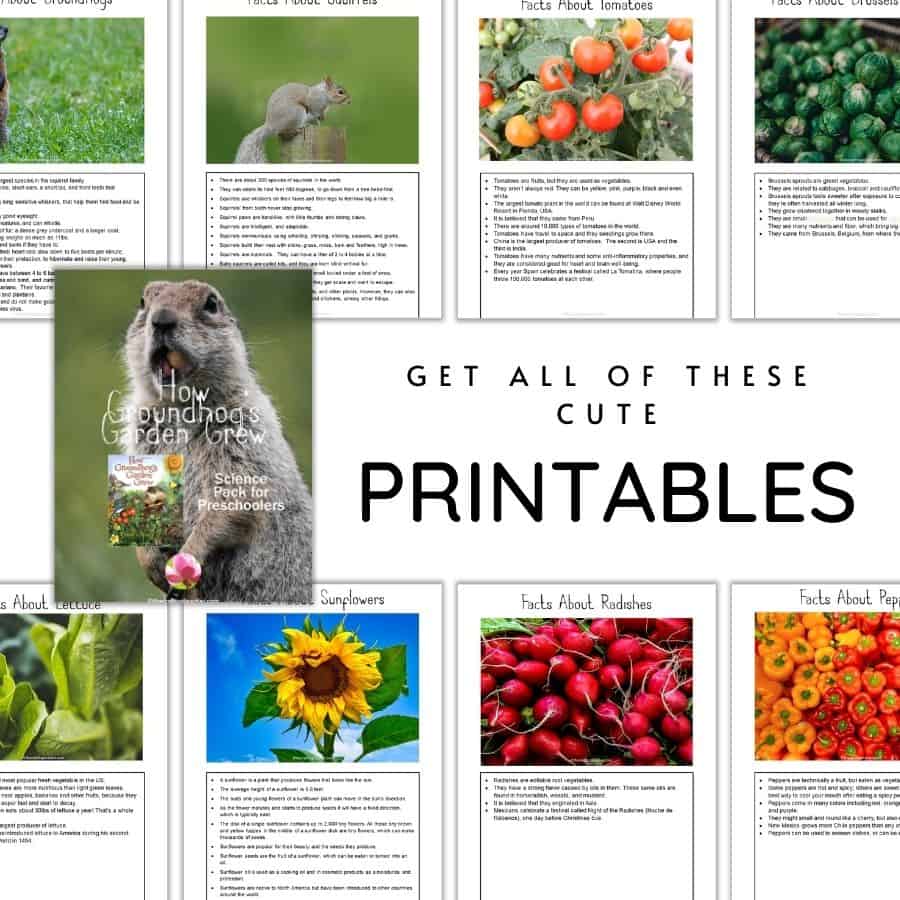
I also included in the How Groundhog’s Garden Grew Science Pack cards to match their names in two versions, one with the names and another one blank, to give you choices according to your children’s level.
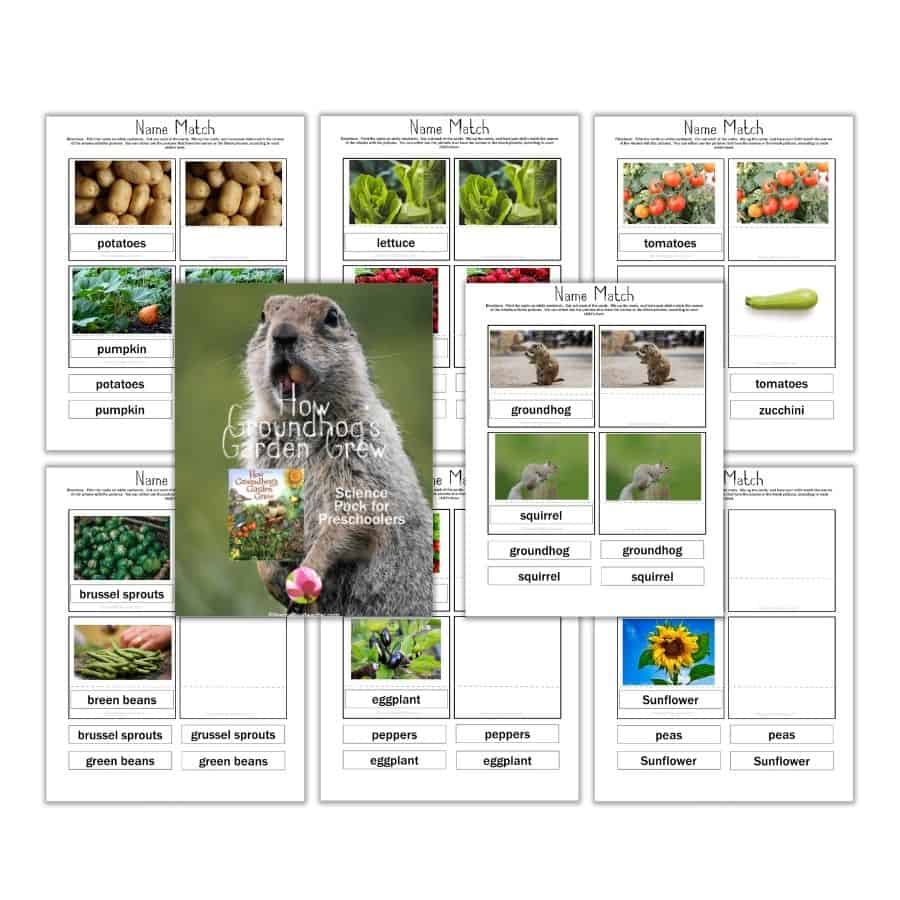
Learning the Body Parts of a Groundhog and a Squirrel
The How Groundhog’s Garden Grew Science Pack includes two body parts matching activities, one with the name of the parts of the groundhog and the squirrel, and another one without. Print the pictures and tags provided in the pack in white cardstock and laminate them. If you want you can add Velcro to the tags. Teach the children the names of these animals’ body parts and what are they for.
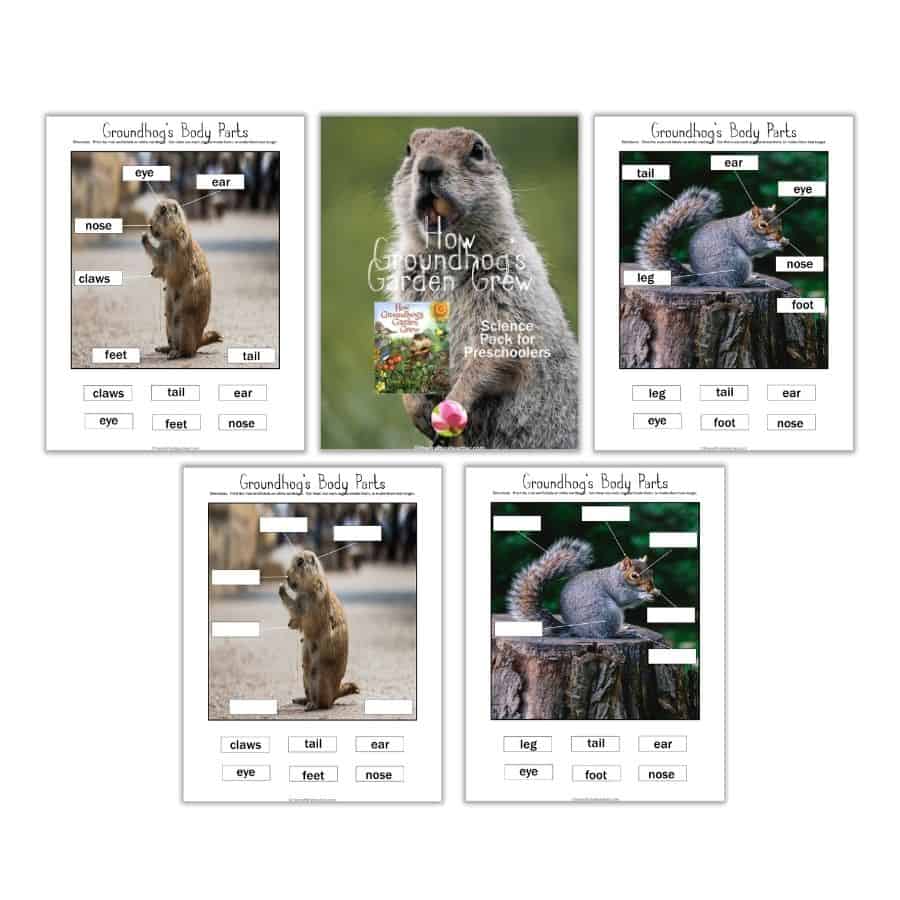
Observing and Dissecting Seeds
This is a potent activity that will teach your preschoolers more than pictures can. To prepare for this activity you just need to soak lima beans in water overnight. The next day place a paper towel on the table and give each child one of the lima beans and magnifying glasses. Tell them that they are going to observe a lima bean seed that has been soaked overnight in water.
Show them how to split the seed in half. Explain to your students what is inside is an embryo, which will become a new plant, and the outside is the coat, which protects the embryo. Explain seeds are planted and receive sun and water, they begin to germinate, which means that they sprout, first growing a tiny root until it develops and becomes a plant. Show them the following video so they can see the entire process better.
Other Activities
- Serve the fruits and vegetables featured in the book for lunch and/or snacks.
- Invite a gardener to come to the class and talk about plants, and how to take care of them.
- Invite your preschoolers to use seeds to make a collage.
- Start your own garden using the seedlings that the children started.
- Use cut potatoes to make prints with tempera paint, for artwork.
- Ask your preschoolers to pretend they are germinating seeds and becoming little plants (seedlings), to the tune of instrumental music.
- Guide your preschoolers to plant vegetables and fruit seeds from the story in small pots and observe the germinating process.
Related Books
As usual, I like to include books in all my activities. These are some of the most interesting books you can find at your local library, used books store, and on Amazon. If you want fast access, just click on the pictures and my links will take you directly to the book on Amazon.
- My First Book About Growing Food by Duopress Labs. This book is a beautiful introduction to the benefits of growing food, helping them to develop a connection with the natural world, in a friendly and easy way.
- Gregory’s Shadow by Don Freeman. Gregory is a shy groundhog, and having his friend Shadow close by makes him feel brave. But one day Gregory and Shadow go outside to look for food, and they get separated. Scared and lonely, they search and search for one another.
- How Plants Grow by Dona Herwick Rice. Children will learn about various parts of the plant including seeds, roots, and leaves in this engaging nonfiction title, featuring vivid, clear photos and simple, informational text.
- Groundhog’s Runaway Shadow by David Biedrzycki. Phil and his shadow do everything together. But where Phil is steady, predictable, and a little boring, Shadow is adventurous, freewheeling—even a bit rude. So they don’t get along so well anymore. Fed up, the two have a falling out, and Shadow runs off to see the world.
- Facts About the Groundhog by Lisa Stratton. This educational book presents is packed with facts along with full-color photographs and carefully chosen words to teach children about the Groundhog.
- Up in the Garden and Down in the Earth by Kate Messner. This book talks about leaves and sprouts, growing vegetables, ripening fruit, and the earthworms, snakes, skunks, and other creatures that make a garden their home.
- Seed to Plant by Kristin Baird Rattini. In this lively and educational book, children will learn how plants grow, learning about what plants need to thrive and grow with careful text, and brilliant photographs.
You can use these ideas by themselves, but I will invite you to combine them with the literacy and math activities I created for this beautiful story, How the Groundhog’s Garden Grew, to take advantage of the opportunity this book offers. Remember that for a more comprehensive and complete educational process, you should not divorce literacy from math, science, or any other domain. They intermingle together and complement each other.
Pin It For Later
If you are in a rush and don’t have time to read the post and download the printable but want to save it for later, pin this to your science or another board on Pinterest for later.
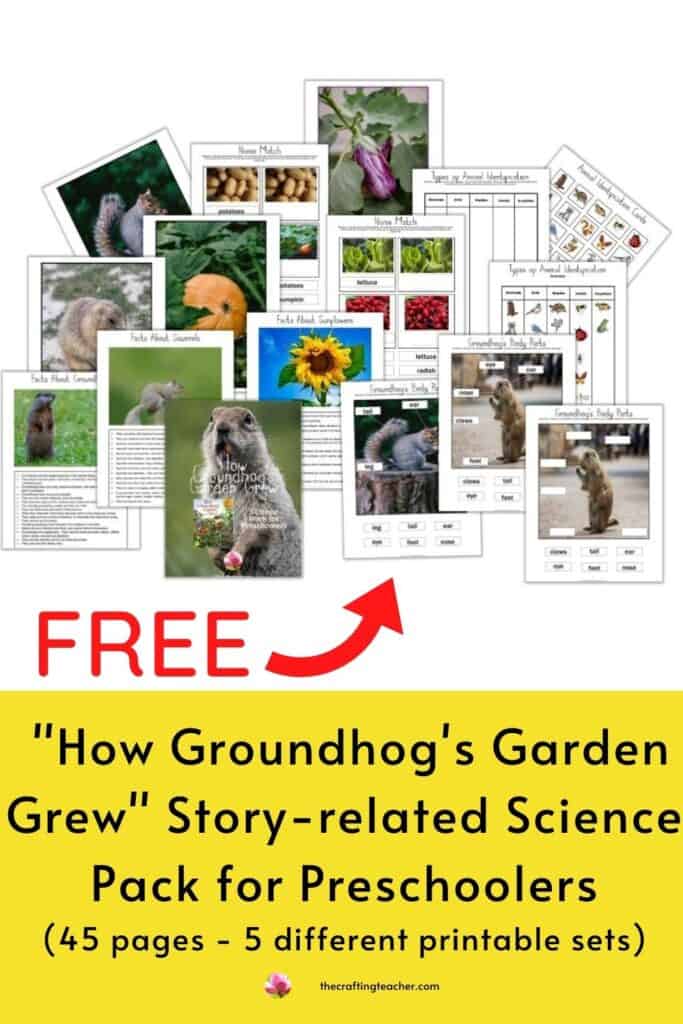
Don’t forget to download your FREE How the Groundhog’s Garden Grew Science activities pack. You just have to click on the link below and type your email, for an immediate download.
Be happy, safe, and creative. I wish you well.
Love,

P.S. Please let me know if these activities work for you, and if you would like to see an article or a printable about how to make something specific, please let me know and I will try my best to create it for you. My goal is to help you in any way I can and I don’t like anything better than to post something that you might find useful.

